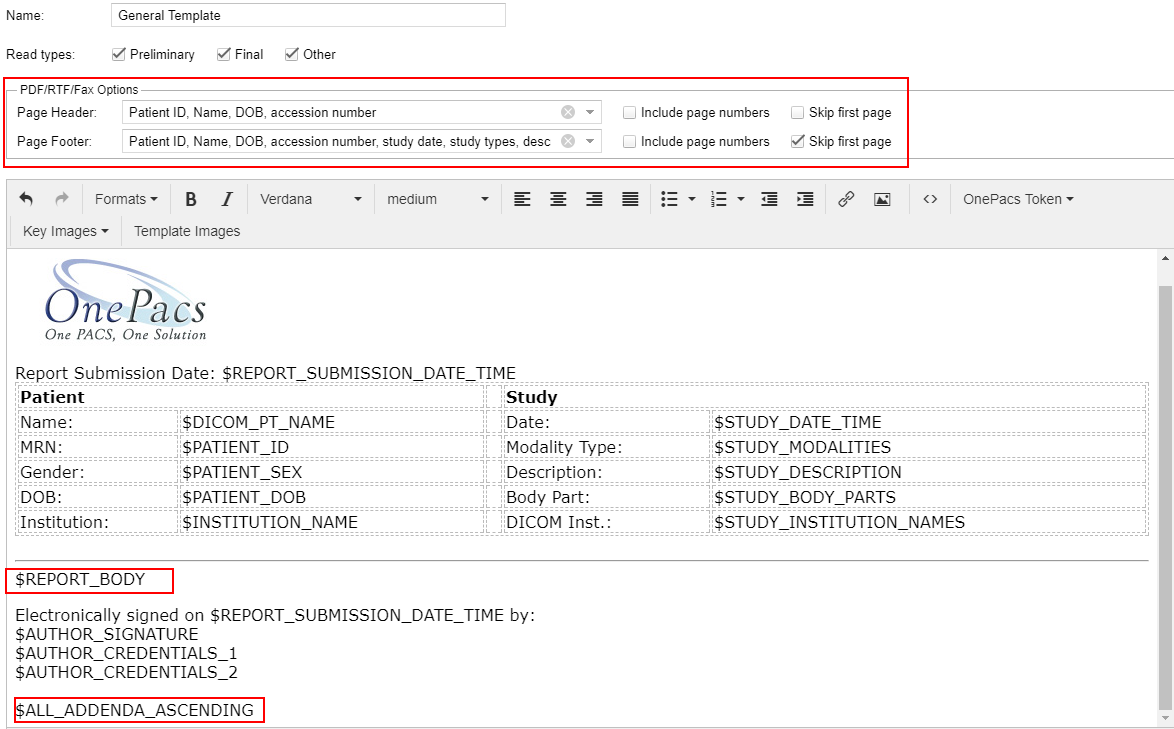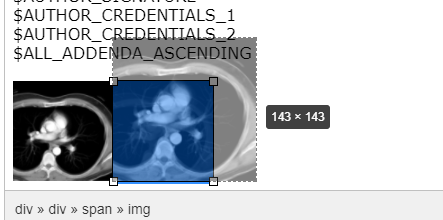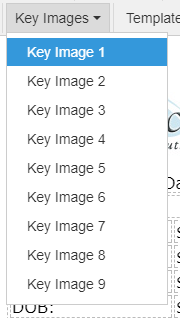...
Report templates allow users with the "Manage report destinations and templates" permission to define the layout and appearance of diagnostic imaging reports, and to decide what information should be included in the reports. The report templates determine how reports will appear when displayed in a web browser, when transmitted by facsimile, or when saved as PDF or RTF. The pre-defined sample templates which are available on establishment of the OnePacs accounts are useful examples of general template structure. The sample templates contain the most commonly desired information in the report header section and include four key images.
Templates can be edited through the Report Templates option in the Admin menu. Select the Admin menu, then select Report Templates. There are two types of templates: those which are available for all facilities within your OnePacs accounts, and those which are only applicable for specific facilities.
To create or edit templates, select the “Templates” tab. To select which templates will be used for particular facilities use the “Facility templates Configuration” tab.
The second tab, “Facility template configuration”, determines which templates will be available for each facility. First, select a facility and then click on the yes and no to modify whether the report template is available for the selected facility. The default templates are configured under the facility settings.
Managing report templates
...
The "OnePacs Tokens" will be replaced with the data from the case that was reported. Key images can be selected as a placeholder that will be replaced by images that are selected as key images of the study. For example, the $REPORT_BODY token will be replaced by the report text for the case when a report is entered. Besides the list of available tokens, one can include information in the report template from the DICOM header by using the DICOM group and element values in the format: $(xxxx,yyyy). For example, to include the "Requesting Physician" from the DICOM header in a report template one would use. $(0032,1032) Tag information can be found by right clicking on a case on the worklist, selecting "Tools" and then "View DICOM header"
Images (Imaging facility logos)
Images can be uploaded for use within templates. In order to upload an image click on the button labeled “Template Images” on the templates tab. This will open a file explorer that enables file management. From this window you can right click on the “Template Images folder” or another created folder to manage files. The right click context menu will give you the ability to create a new folder or to upload images to the selected folder. Click the “Add” button to show a local file explorer and allow a file to be queued for upload. The image file name should not contain spaces. Once the upload queue contains the desired images click the “upload” button to start the transfer. Double click on an image to open the image in a separate window. The URL of the image can be retrieved from the window. The image URL will be need to insert the image in a template.
When editing a template use the "Insert" and "Insert Image" menu options to insert an image. Paste or type the image URL that was copied above as the source of the image. Click the “insert” button to insert the image to the current cursor location. External (to the OnePacs System) fully referenced images should be avoided, especially when the image is not available via HTTPS.
Key images
Key images, as selected for a given study from within the OnePacs Diagnostic Workstation, may be inserted into reports by selecting a key image placeholder from the key images dropdown menu:
Key images are represented in the report template by a standardized placeholder image (which happens to be an image of an axial CT through the chest). In actual reports, these placeholder images will be replaced by the actual selected key image(s) for the case in question. (If no key images exist for the case, the key image placeholders in the report template will be ignored and nothing will display in their place.)
The following screenshot demonstrates two key image placeholders within a report template:
The key images will display at whatever size/magnification desired. The following screenshot demonstrates manual adjustment of the size of the one of the two key image placeholders. In reports using this template, the key image(s) will display at the actual sizes configured in the report template:
Report destinations and distribution rules
...







